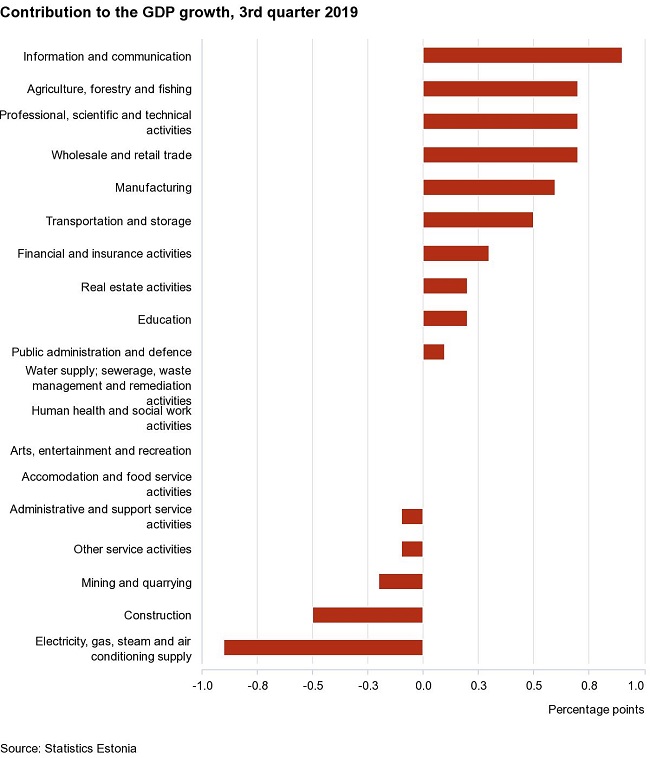Analytics, Estonia, GDP, Statistics
International Internet Magazine. Baltic States news & analytics
Friday, 19.04.2024, 21:12
Estonia: Stable economic growth continued
 Print version
Print versionThe seasonally and working day adjusted GDP grew 1.0% compared to the previous quarter. Compared to the 3rd quarter of 2018, the seasonally and working day adjusted GDP grew 4.1%.
The biggest contributor to economic growth for the second quarter in a row was information and communication. Contribution to economic growth indicates the share of the growth of an economic activity’s added value in GDP growth. Information and communication was followed by agriculture, forestry and fishing; professional, scientific and technical activities; wholesale and retail trade; manufacturing; transportation and storage. The last time agriculture, forestry and fishing had such a strong impact was in the 2nd quarter of 2018. The most notable negative impact on the economic growth came from electricity, gas, steam and air conditioning supply. Also construction had a significant negative impact.

Domestic demand grew 3.9%, primarily due to gross fixed capital formation, which grew 8.1%. Investment growth was broad-based, and only the government sector had a negative impact. The household final consumption grew a modest 1.2% in the 3rd quarter.
The exports of goods and services grew 7%. The export of goods grew 8.6%, largely on account of the export of wood products, motor vehicles and products of agriculture and hunting. The exports of services grew 4.2%. The growth was led by computer services.
The imports of goods and services grew 4.4%. The import of goods grew 5.4%, largely on account of the import of vehicles. The imports of services grew 1.7%.
Productivity per person employed grew 2.3% due to historically high numbers of persons employed. Productivity per hour worked grew 3.4%. The growth of unit labour cost was 2.2%.








 «The Baltic Course» Is Sold and Stays in Business!
«The Baltic Course» Is Sold and Stays in Business!

